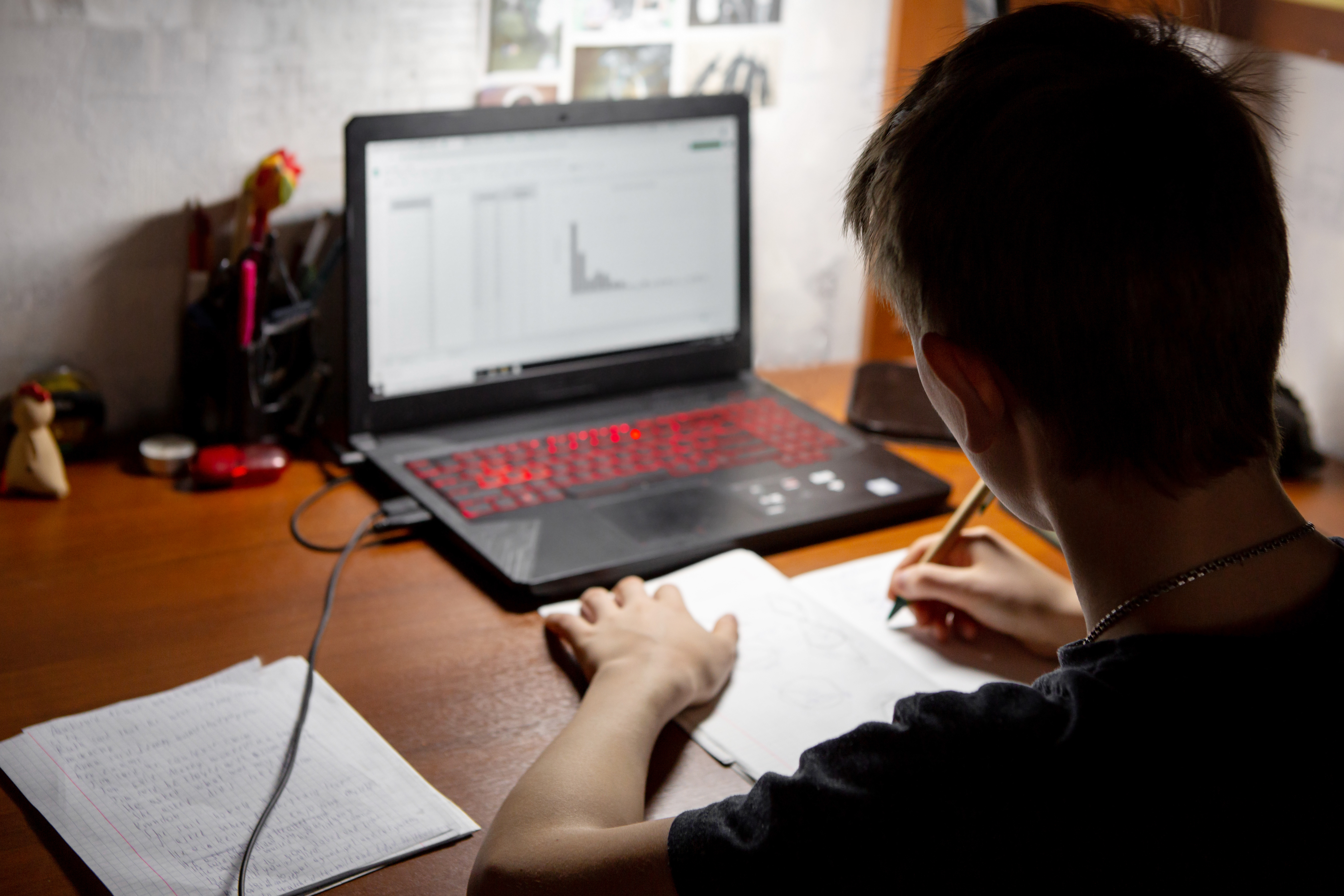by Kirsten Mickelwait
Online education has been a growing phenomenon over the past decade. Then, in the blink of an eye, the COVID-19 pandemic forced almost all schooling to go online as the nation sheltered-in-place. It suddenly brought to the forefront some long-term studies being conducted by three School of Information researchers who explore inequality and digitization in educational spaces. Their work has revealed that devices alone don’t facilitate learning and WiFi doesn’t automatically create access.
The importance of scaffolding
I School Associate Professor Jenna Burrell has done research around the “digital divide” — how people in rural areas and underserved communities are left far behind when it comes to internet access and activity. During the COVID-19 crisis, they’ve become even more marginalized as learning has moved online. Not having residential connectivity or in-home computers is no longer just an inconvenience, Burrell says, it’s a matter of basic education.
Two problems are particularly pressing. In the US, state and federal policies have focused on protecting the private sector’s ability to provide connectivity in ways that are maximally profitable and providing incentives to serve less profitable areas. However, according to Burrell, these incentives are not enough and the result is incredibly uneven connectivity in this country. “Having access to the internet is not a given, even today,” Burrell said. “In the past, families without residential connectivity have relied on public libraries for access; but during COVID, even those resources have been closed.”
Second, it’s a flawed premise that students can teach themselves. Teachers and parents must provide the requisite “scaffolding” to make online education work; when that support isn’t adequate, the learning structure falls flat.
During quarantine, many public school systems have risen to the challenge. Opening up public WiFi hotspots and moving toward asynchronous learning — not requiring online attendance at a specific time — can greatly help students in underserved areas, Burrell says.
How digital learning leans on relationships
Anne Jonas is an I School Ph.D. candidate studying “virtual schools in an era of connection and inequality.” Her dissertation explores the risks and rewards of such schools as well as how existing social inequities in education and labor play out in the online education space.
 Before the pandemic, Jonas says, people often turned to virtual schools because the traditional school infrastructure was failing them in some way — this might be due to school violence, insufficient services for students with disabilities, or childcare issues for teachers. Now, during quarantine, most families and teachers are experiencing the challenges of virtual learning, even if they didn’t choose it voluntarily.
Before the pandemic, Jonas says, people often turned to virtual schools because the traditional school infrastructure was failing them in some way — this might be due to school violence, insufficient services for students with disabilities, or childcare issues for teachers. Now, during quarantine, most families and teachers are experiencing the challenges of virtual learning, even if they didn’t choose it voluntarily.
“One thing I’m especially interested in is how the relationship between teachers, students, and families is maintained, strengthened, or strained by these new digital arrangements,” Jonas says. “What works for one family is not necessarily going to work for another. Holding those dichotomies is really important.”
Recycling an empty promise
Morgan G. Ames — an assistant adjunct professor at the I School and associate director of research for the Center for Science, Technology, Medicine and Society — focuses on environmental factors and the broader cultural mythologies surrounding technology. Her 2019 book, The Charisma Machine: The Life, Death, and Legacy of One Laptop per Child, revealed the flaws of that ambitious global project, some of which are recurring in online environments today.
Ames researches the broader landscape of promises made in tech education — ideas that haven’t been fulfilled. “Many of the promises made by One Laptop Per Child have been recycled for 50 years,” Ames says. “The notion that computers can revolutionize learning and tailor content to each child dates back to the 1960s. Each time we invent a new device, those same promises get recycled into it. COVID introduced yet another hype cycle, which is often used to defund educational resources at all levels.”
Computer skills need a human interface
At the same time, there are models for technologically assisted learning that can really help learners of all ages—models that are all the more relevant as education moves online, either partially or wholly. Together, Ames and Burrell worked on using the “connected learning” framework with low-income Black and Latinx students. Partnering with a Richmond-based nonprofit, Building Blocks for Kids, they launched Minecraft Summer Camp in 2016 to support STEM learning grounded in children’s own interests. Minecraft is a “sandbox” video game that engages players’ creativity in multiple modes of gameplay. The campers, aged 7 to 14, learned some fundamentals of computational thinking, navigational skills, being a good digital citizen, working out conflicts, reading chats, and how to use the keyboard. The older kids also learned about fundamental programming concepts.
A common theme across all of these projects is that students need not only good computers and internet access but strong advocates to support and scaffold their online education. “True education builds upon relationships and social connections,” Ames says. “Those are things that can’t be replicated with a computer.”











